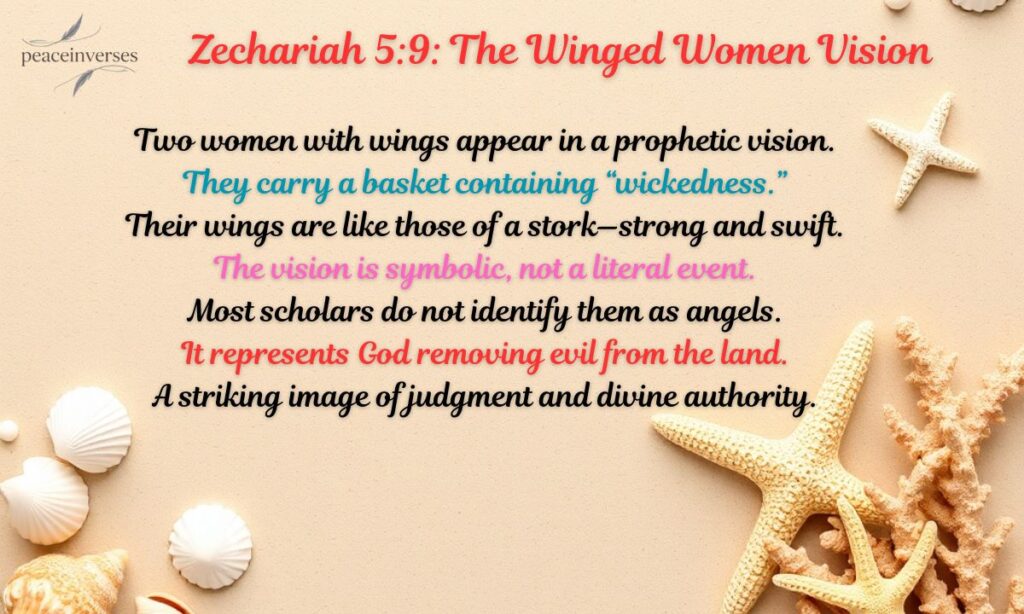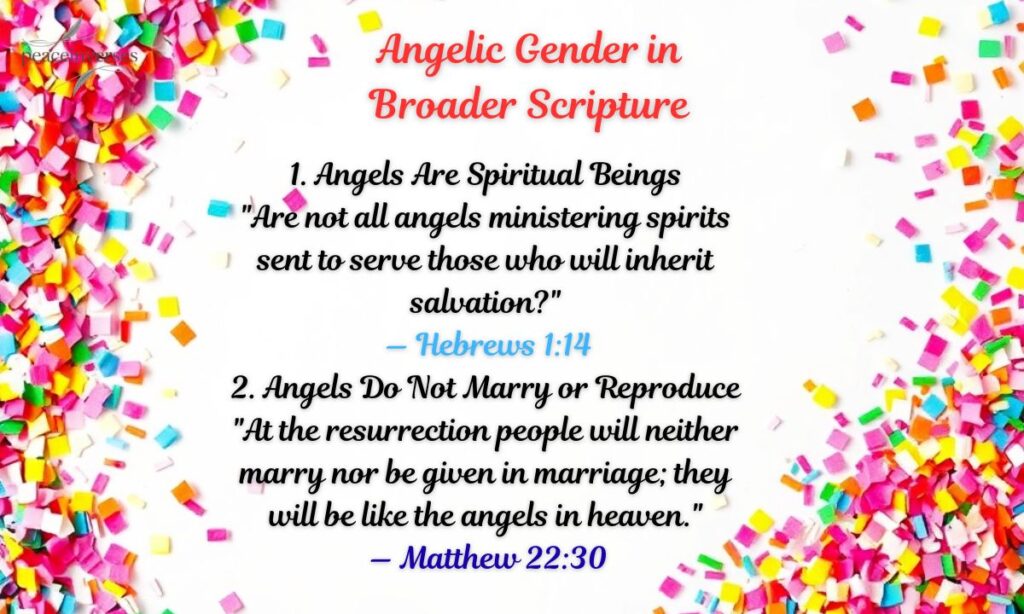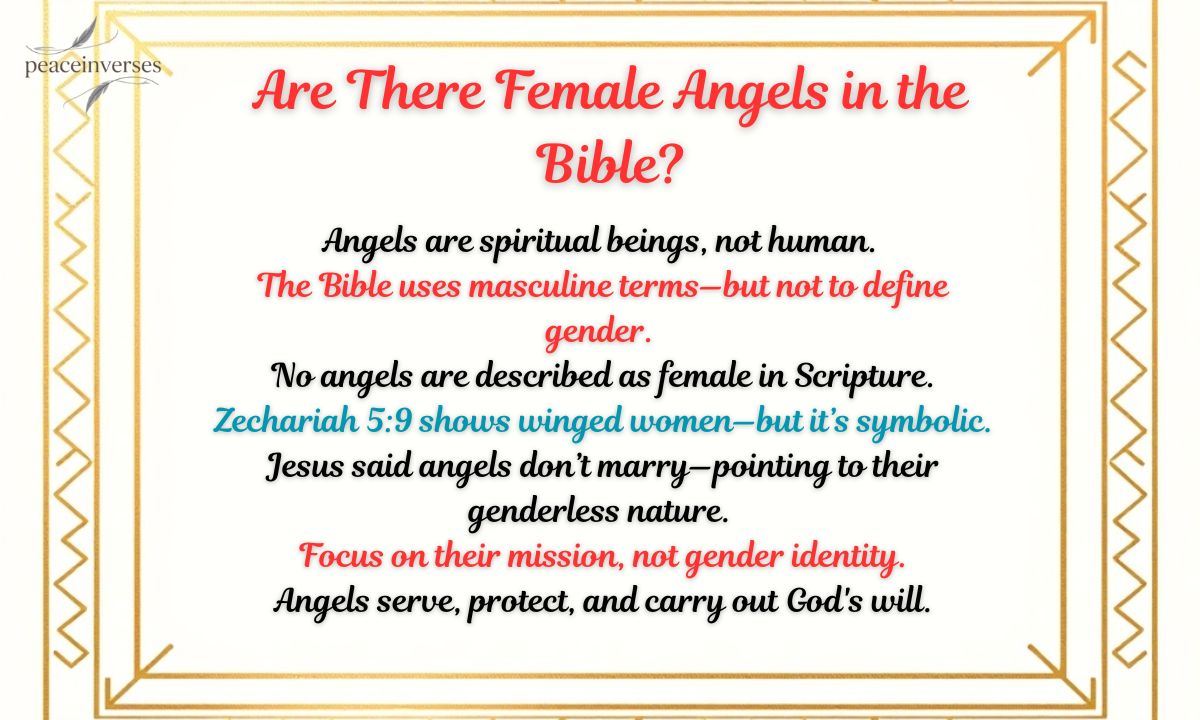Have you ever wondered if the Bible mentions female angels? The image of angels often shifts with culture and tradition, but scripture tells a deeper story. Exploring this question reveals insights into how God’s messengers are described.
In this study on female angels in the Bible, we’ll look at verses, historical interpretations, and theological debates. The goal is not just to ask if they exist, but to understand what their portrayal means for faith, symbolism, and biblical truth.
Biblical Descriptions of Angels and Gender
The Bible presents angels as spiritual beings created to serve God and carry out His will. They are often described with great power and authority, yet without the limitations of human nature. Their role is not tied to marriage, reproduction, or human categories of male and female.
In many passages, angels appear in ways that highlight their otherworldly purpose. They are called “ministering spirits” in Hebrews 1:14, emphasizing their service rather than their form. The focus is always on what they do in God’s plan, not on their gender.
Hebrews 1:14 – “Are not all angels ministering spirits sent to serve those who will inherit salvation?”
Jesus also explained that angels do not marry or reproduce as humans do, pointing to their unique, spiritual existence. This reveals that gender, as we understand it, is not their defining trait. Instead, their descriptions in Scripture focus on mission and obedience to God.
Matthew 22:30 – “At the resurrection people will neither marry nor be given in marriage; they will be like the angels in heaven.”
Masculine Pronouns and Names in the Bible
When angels appear in the Bible, they are often referred to using masculine pronouns. Figures like Gabriel and Michael are given male names, which reflect the languages of the texts—Hebrew, Aramaic, and Greek. These languages default to masculine forms when referring to beings without biological gender.
This linguistic choice does not mean that angels are biologically male. Instead, it reflects cultural and grammatical norms of the time. Their mission and identity as God’s servants are the key points, not their gender assignment. Gabriel delivers messages with authority, while Michael fights spiritual battles on behalf of God’s people.
Daniel 10:13 – “But the prince of the Persian kingdom resisted me twenty-one days. Then Michael, one of the chief princes, came to help me…”
The use of masculine pronouns also serves a practical function for readers and translators. By giving angels names and traits people could relate to, the biblical authors helped convey their authority and power. Still, the essence of angels is spiritual, beyond the categories of male and female.
Luke 1:26-27 – “God sent the angel Gabriel to Nazareth, a town in Galilee, to a virgin pledged to be married to a man named Joseph, a descendant of David. The virgin’s name was Mary.”
Zechariah 5:9: The Winged Women Vision
One of the most unique passages in Scripture is found in Zechariah 5:9. Here, the prophet describes a vision of two women with wings like storks. They lift up a basket that contains “wickedness” and carry it away. This verse has often raised questions about whether these women could be female angels.
Zechariah 5:9 – “Then I looked up—and there before me were two women, with the wind in their wings! They had wings like those of a stork, and they lifted up the basket between heaven and earth.”

Scholars generally agree that this vision is symbolic rather than literal. The two winged women are not presented as angels but as part of a prophetic image of judgment. Their wings suggest swiftness and power, while the stork imagery may point to unclean or unusual elements in the vision.
The focus of the passage is not on the identity of the women, but on the message being communicated. Wickedness is being removed and taken away under God’s command. This vision shows how imagery in prophecy often blends unusual details to convey deeper truth.
Some readers view this as evidence of female angels, most interpreters caution against that conclusion. The text never calls them angels, and their role is tied specifically to Zechariah’s symbolic vision. The passage remains important because it shows how God uses striking imagery to deliver spiritual messages.
Common Interpretations and Scholarly Debates
The vision of the winged women in Zechariah 5:9 has led to wide debate among scholars and theologians. Some argue the figures could represent angels, while others see them as symbolic messengers of God’s judgment. A few even suggest they may reflect demonic forces carrying out divine purposes.
Well-known Christian voices, such as Billy Graham, highlighted that angels in Scripture are always described as spiritual beings serving God’s will. Yet he and others emphasized that the Bible does not clearly define the winged women as angels. This leaves room for symbolic interpretations rather than literal ones.
Church traditions also vary in their readings of this vision. Some early commentators saw the women as metaphors for nations or powers used by God to remove wickedness. Others suggested their feminine form may highlight the unusual or shocking nature of the prophecy. The debate continues among scholars today.
The key issue remains the function of the vision within Zechariah’s prophecy. Its purpose is not to define angelic gender but to show that God removes sin and wickedness from His people. Whether literal or symbolic, the message points to God’s authority over evil.
Zechariah 5:8 – “He said, ‘This is wickedness,’ and he pushed her back into the basket and pushed its lead cover down on it.”
Symbolic vs. Literal Readings
Many interpreters see the passage as a symbolic image of judgment. The winged women are not meant to describe actual angels but to portray God’s power removing sin. Their stork-like wings add to the strangeness of the vision, showing that this is more prophetic art than literal history.
Supporters of a literal reading argue that angels often appear in unexpected forms. Since Gabriel and Michael are named, they suggest the Bible leaves room for varied angelic appearances. Yet the text never calls the winged women angels, leaving that idea speculative.
Bias also plays a role in interpretation. Some readers may dismiss the possibility of female angels because tradition emphasizes masculine portrayals. Others may overemphasize the feminine imagery without considering the prophetic context. Careful study balances both sides.
The stronger view among most scholars is that Zechariah’s vision is symbolic. It uses striking imagery to communicate God’s judgment rather than to reveal angelic gender. This approach fits with how many prophetic visions in Scripture use metaphor to reveal deeper truths.
Matthew 13:34 – “Jesus spoke all these things to the crowd in parables; he did not say anything to them without using a parable.”
Angelic Gender in Broader Scripture
The Bible consistently shows angels as spiritual beings rather than physical humans. They serve God’s will and carry out His commands without reference to gender. In both Old and New Testament texts, the emphasis is on their mission and authority, not their appearance.

Jesus confirmed that angels do not marry or reproduce, separating them from human categories of male and female. This highlights their role as eternal messengers. While masculine pronouns are often used, they reflect language, not biology. Angels exist outside of human limitations.
Matthew 22:30 – “At the resurrection people will neither marry nor be given in marriage; they will be like the angels in heaven.”
The Old Testament also calls angels “sons of God,” emphasizing service and closeness to Him. But again, this does not define them as male—it is a cultural expression. The consistent picture is one of spiritual beings who transcend human categories of sex and gender.
Hebrews 1:14 – “Are not all angels ministering spirits sent to serve those who will inherit salvation?”
Key Points on Angelic Gender in Scripture:
- Angels are consistently described as spirits, not physical beings.
- Masculine pronouns reflect grammar and culture, not gender identity.
- Jesus taught angels do not marry, showing they are beyond human categories.
- Their mission—worship, service, and protection—is always emphasized.
- No verse explicitly describes angels as male or female beings.
Extrabiblical and Cultural Influences
Outside the Bible, angels have been imagined in many different ways. Jewish mysticism and apocryphal writings sometimes expand their roles or descriptions. These texts often introduce symbolic female imagery or present angels in varied forms beyond scripture’s focus.
Christian tradition has also been shaped by centuries of art and literature. Paintings from the Renaissance often portrayed angels with feminine features or soft appearances. This cultural influence shaped how many people came to imagine angels in general.
In popular culture, female angels are common in films, books, and media. These depictions often highlight beauty, comfort, or nurturing qualities. While not scriptural, they reflect human longing for images of divine care and protection in familiar forms.
The contrast between biblical texts and cultural portrayals shows how interpretation shifts over time. While the Bible emphasizes angels as spiritual and genderless, tradition and art often give them human features. Recognizing this helps us separate faith from cultural imagination.
Examples of Cultural Influences on Angelic Imagery:
- Jewish mysticism: Describes angelic hierarchies with symbolic traits.
- Apocryphal texts: Expand on biblical stories with added angelic roles.
- Renaissance art: Popularized angels with feminine faces and flowing robes.
- Literature and poetry: Romanticized angels as guides or protectors.
- Modern media: Movies and TV often portray angels as women with wings.
Theological Perspectives on Angelic Nature

Christian theology has long taught that angels are spiritual beings without gender. They are created to serve God, worship Him, and minister to His people. Catholic, Orthodox, and Protestant traditions all agree that angels do not marry or reproduce, aligning with Jesus’ teaching.
Thomas Aquinas, in Summa Theologica, explained that angels are pure spirits and therefore cannot be classified as male or female. Their descriptions in masculine terms are for the sake of human understanding. This view remains central to Catholic teaching.
Matthew 22:30 – “At the resurrection people will neither marry nor be given in marriage; they will be like the angels in heaven.”
Orthodox theology emphasizes angels as messengers who reveal God’s presence. They are honored as powerful beings who transcend earthly categories. Protestant perspectives also focus on angels as ministers of God’s will, stressing function over form.
Hebrews 1:14 – “Are not all angels ministering spirits sent to serve those who will inherit salvation?”
Key Theological Points Across Denominations:
- Angels are spirits, not bound by human gender.
- Masculine pronouns are linguistic, not biological.
- Their mission is worship, service, and protection.
- Church fathers like Thomas Aquinas affirmed their non-gendered nature.
- Denominations differ in emphasis but agree on their spiritual essence.
Modern Media and Misconceptions
In modern culture, angels are often shown in ways that distort biblical truth. Shows like Touched by an Angel present angels as emotional, human-like figures. Female portrayals in such media reinforce cultural stereotypes rather than Scripture.
These portrayals can mislead people into thinking angels are either male or female beings. They may also blur lines about salvation, suggesting angels guide people into heaven outside of Christ’s work. Such images distract from the biblical truth of angels as God’s servants.
2 Corinthians 11:14 – “And no wonder, for Satan himself masquerades as an angel of light.”
Modern media reflects human desires for comfort and companionship. Angels become characters shaped by imagination rather than theology. While inspiring to some, these portrayals risk replacing truth with fantasy.
Main Misconceptions from Media:
- Angels are often shown as female caretakers or male warriors.
- They are sometimes depicted as granting salvation.
- Emotional traits are exaggerated to make them relatable.
- Biblical roles of worship and service are minimized.
- Popular culture blurs the line between truth and fiction.
Frequently Asked Questions
Are there female angels mentioned in the Bible?
No, the Bible does not name or describe angels as female. Most references use masculine pronouns, though this reflects grammar, not biology.
Can angels appear as women?
Scripture shows angels can appear in human form, but it does not specify gender. Their appearances are for God’s purpose, not to define identity.
Who are Gabriel and Michael, and why masculine names?
Gabriel and Michael are the only named angels in the Bible. Their masculine names reflect language use, not angelic gender.
What about the two winged women in Zechariah 5:9?
This vision is symbolic, representing God’s judgment on wickedness. Scholars debate their identity, but most do not see them as literal female angels.
Do angels have gender in heaven?
No, angels are spiritual beings. Jesus said they neither marry nor reproduce, showing they are not bound by human categories of gender. Matthew 22:30 – “They will be like the angels in heaven.”
Conclusion
The Bible presents angels as spiritual servants of God, created to worship Him and minister to His people. Their identity is rooted in their mission, not gender.
Rather than focusing on whether angels are male or female, believers are called to recognize their divine role in carrying out God’s will. Scripture invites us to look past appearances and instead trust the purpose God gave His messengers.

Muhammad Shoaib is a passionate faith-based writer with over 10 years of experience in creating meaningful content centered around prayers, Bible meanings, scriptural teachings, and heartfelt wishes. He is the lead writer at PeaceInVerses.com, where he shares spiritual insights and uplifting messages to guide and inspire readers on their faith journey.

